Nature’s natural night sky is best appreciated in true darkness. The stars, the Milky Way, the constellations that you somewhat know — it’s always better to experience these wonders with as little light pollution as possible. Unfortunately, in many of the cities and towns we call home, light pollution proliferates. But in regions certified as International Dark Sky Places (IDSP) by the International Dark Sky Association (IDSA), the stars are yours for the viewing.
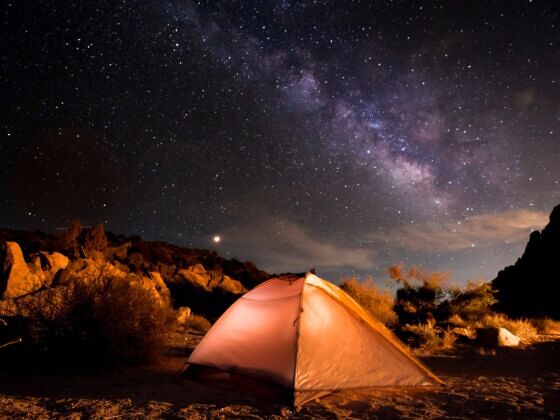

11 of the Best Campgrounds for Stargazers in the United States
The IDSA keeps track of light pollution around the world. There are more than 130 certified locations across the globe that undertake an application process. Before somewhere can become a true dark sky location, it first must show its commitment to protecting against the types of light that make satellites the only visible specks in the sky. There are dark sky communities, sanctuaries, urban centers, reserves, and, most importantly for those looking for isolation under the night sky, parks.
An International Dark Sky Park, according to the official designation, is “a land possessing an exceptional or distinguished quality of starry nights and a nocturnal environment that is specifically protected for its scientific, natural, educational, cultural heritage, and/or public enjoyment.” It can be private or public. The main requirement other than its sky visibility is that the general population has access to all of the night sky glory.
The United States has a lot to choose from, and here’s a map of all of the dark sky locations. Maybe you want to road trip to them all, or maybe you simply want to escape for a weekend. Either way, there are worse places to start than these certified International Dark Sky Parks across the continental US.
Death Valley National Park — California and Nevada
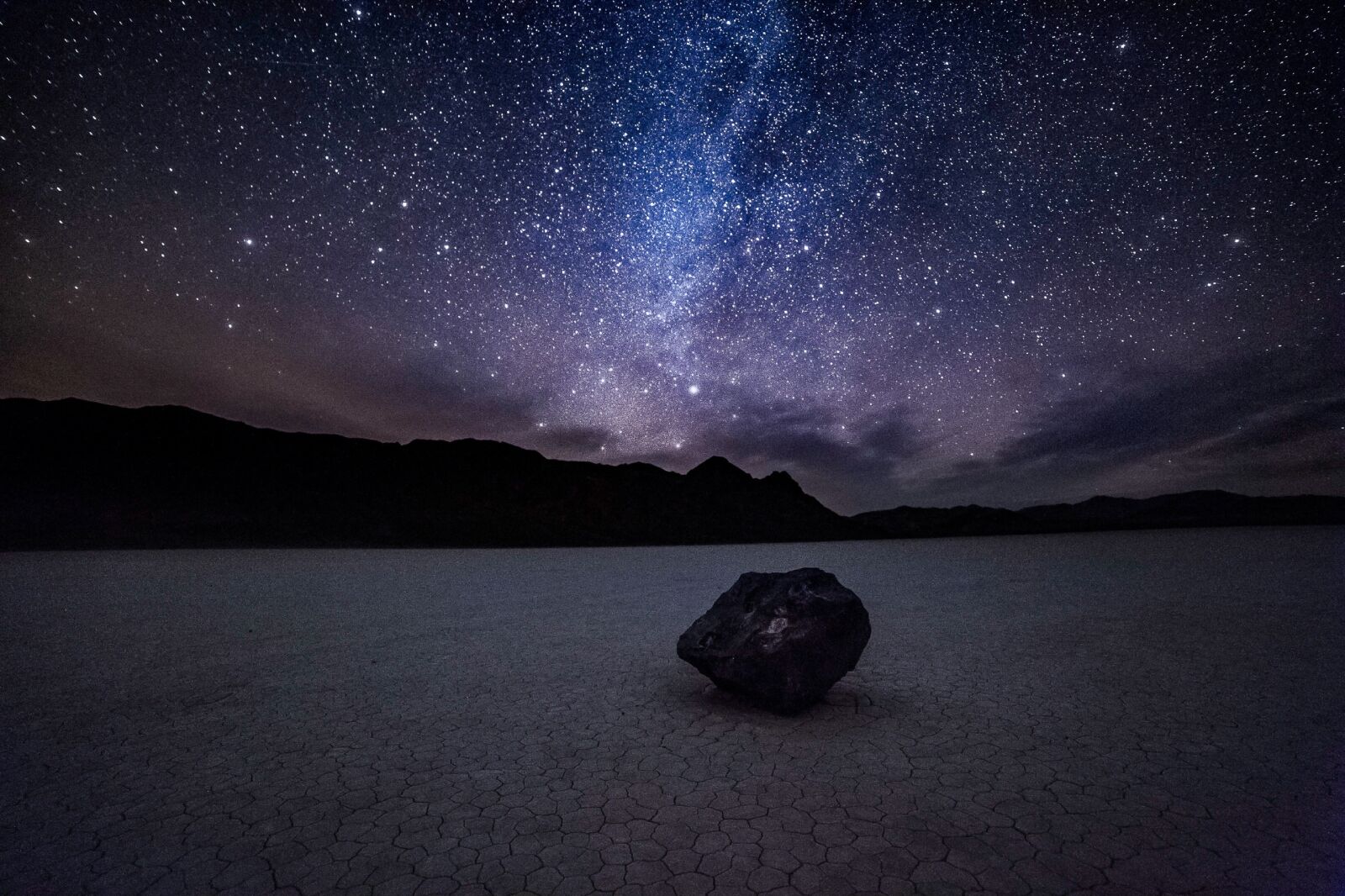
Photo: Dixon Pictures/Shutterstock
Long the hottest place on Earth, temperatures in Death Valley have rocketed over the past decade. Yet it’s also in that sweet spot where it’s close enough to major urban centers — Los Angeles is about four hours away, and Las Vegas is around two — to be convenient without being so close that it encounters much light pollution.
Death Valley is rated as a “Gold Tier” location, which is the highest dark sky designation. Camping here may mean being prepared for the elements, but it also means catching some of the best views of what lies beyond the atmosphere while stuck here on planet Earth. With relative humidity levels hitting lows of 10 percent in the summer, Death Valley’s air is so dry that little distorts the lightwaves making their way from distant galaxies.
You could spend your days cycling through the desert landscape and camping under the stars at night, though be sure to arrive at the right time of year. Temperatures can top 100 into midnight in the dead of summer. Bring an RV to satisfy all your humanly needs if you’d rather arrive on your own schedule rather than follow nature’s schedule. There are multiple tent and RV camping options, including Furnace Creek, Sunset, and Stovepipe Wells. Sites are first-come, first-served.
Best season to visit: Winter
Best type of camping: RV
Big Bend National Park — Texas
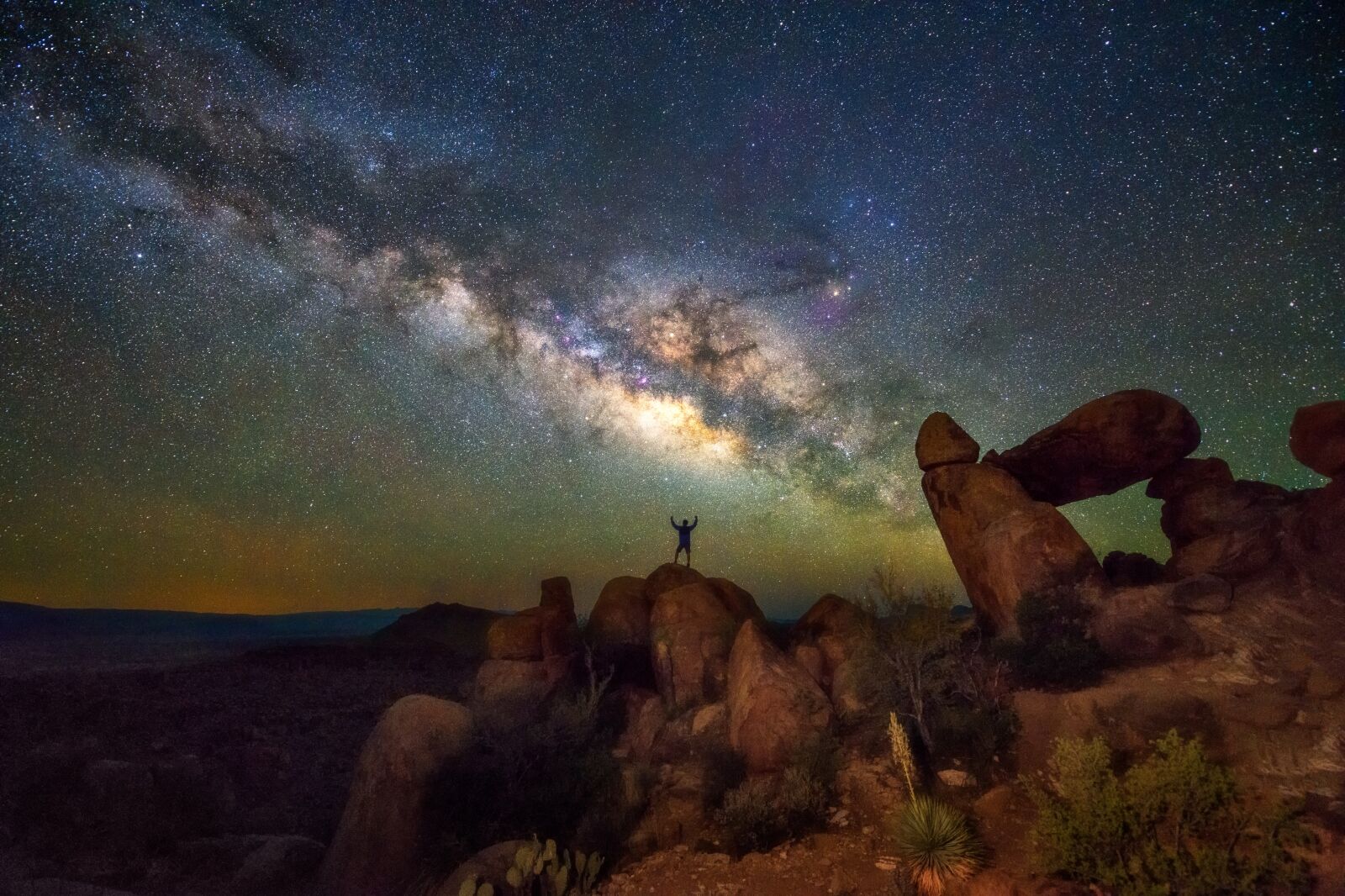
Photo: Wisanu Boonrawd/Shutterstock
Texas is large, and it only makes sense that there are near-empty regions of the state perfect for stargazing. Big Bend National Park is in southern Texas along the Rio Grande River that serves as the border between the US and Mexico. It’s one of the largest national parks, yet also one of the least-visited. Both of these qualities are prime for a dark sky designation — as well as its low humidity, which means hardly any clouds nor any distortion caused by water particles.
Big Bend never gets too cold, and even winter temperatures hover around a comfortable 70 degrees during the day, 50 at night. Stay for a few days to float down the Rio Grande and take in the diversity of birds, bats, and cacti. At night, experience why the IDA describes the skies over Big Bend as “among the darkest in North America.” There are four campgrounds in the park suitable for tents and RVs. Drinking water and restroom facilities are available at all.
Best season to visit: Spring, winter, and fall
Best type of camping: Tent or RV
Great Sand Dunes National Park — Colorado
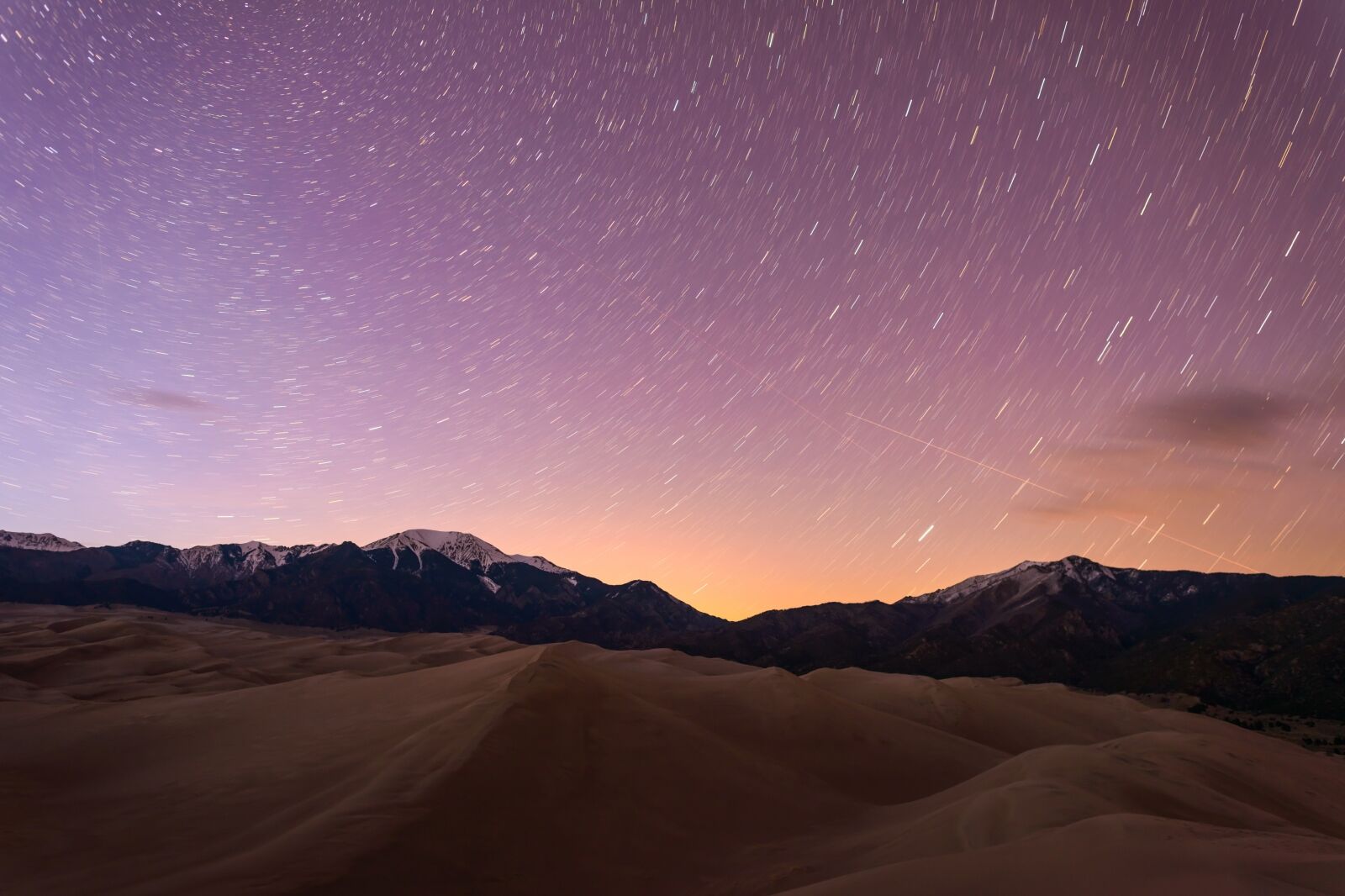
Photo: Sean Xu/Shutterstock
The coasts get all of the attention when it comes to sand dunes, but it’s actually the middle of the state that has the tallest sand dunes in the United States. And one of the best parts about the locale isn’t below your feet — it’s above. Great Sand Dunes National Park is in a remote region of southern Colorado. It’s not only one of the darkest but also one of the quietest sites monitored by the National Parks Service.
Midday can get hot, so start any daytime treks to the highest reaches early. The heavy flowing Medano Creek provides some respite when there’s enough snowmelt to get the water moving, and stunning lookouts abound. The real magic happens after dark, however. Inside the park you’ll find Piñon Flats Campground. It is open from April through October. Individual sites can be reserved six months in advance, while group bookings can be made up to one year prior. If there’s no availability here, check out the various other sites that are located within 40 miles of Great Sand Dunes Visitor Center.
Best seasons to visit: Spring, summer, and fall
Best type of camping: Tent
Bryce Canyon National Park — Utah
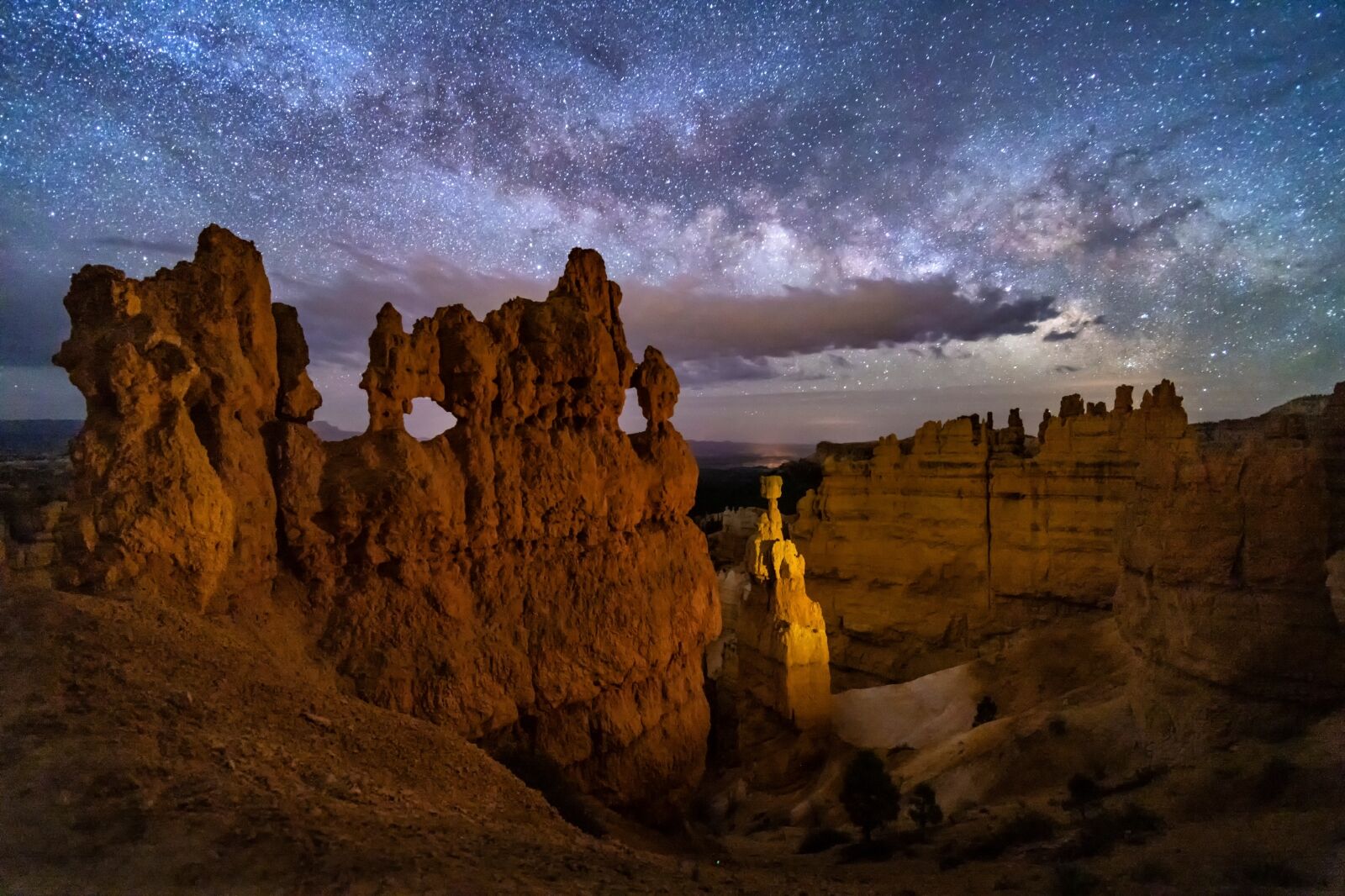
Photo: Colin D. Young/Shutterstock
With its vast, open landscapes and minimal light pollution, Utah offers unparalleled views of the night sky. Bryce Canyon is not only famous for its unique geological formations, but also its extraordinary night skies. It’s one of the best places in the state to see the Milky Way.
There are two campsites, North and Sunset. In an attempt to reduce congestion, there’s a shuttle service that runs from the camps to the most iconic sites. It’s worth noting that the North site requires prior reservations between May 19 — October 7. Sunset is first come first served throughout the year, unless you are booking a group site which you will have to do in advance. Bryce Canyon’s backcountry camping areas are situated in forest areas and offer a superb opportunity to enjoy the night sky in solitude.
Best seasons to visit: Spring and fall
Best type of camping: Tent or RV
Waterton-Glacier International Peace Park — Montana and Alberta, Canada
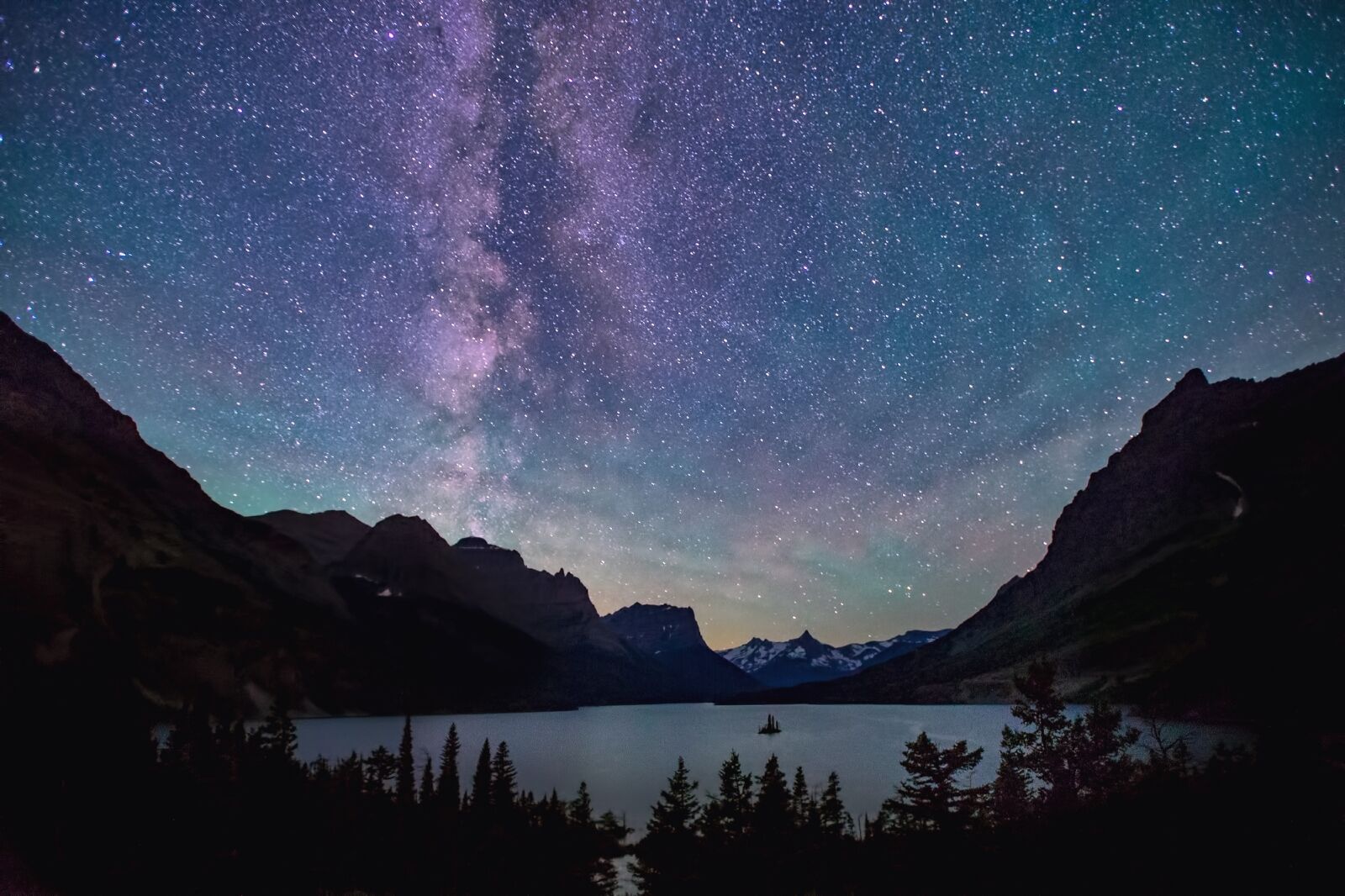
Photo: FloridaStock/Shutterstock
This certified dark sky location spans two parks and two countries: Waterton Lakes National Park in Alberta, Canada, and Glacier National Park in Montana. The spot is also a UNESCO World Heritage site and has a cumulative two UNESCO Biosphere Reserves. The flora and fauna are reason enough to visit in the summer months due to the diversity of wildlife to see. The remoteness that makes it such a special place for animals also makes it a special place to see the heavens.
Stateside, Glacier National Park is the 10th most-visited National Park in the US. Thanks to its size, however, it’s not too hard to find a place without people. (Hiking the Jefferson Pass Traverse is a good starting getaway.) It’s about as remote as remote gets in the country, leaving you at night with nothing but your thoughts and the stars. Tent camping with the proper gear is easy enough to do, there are 13 front country campgrounds. While there are a number of locations throughout the park that are not recommended for RVs and trailers.
Best season to visit: Summer
Best type of camping: Tent
Buffalo National River — Arkansas
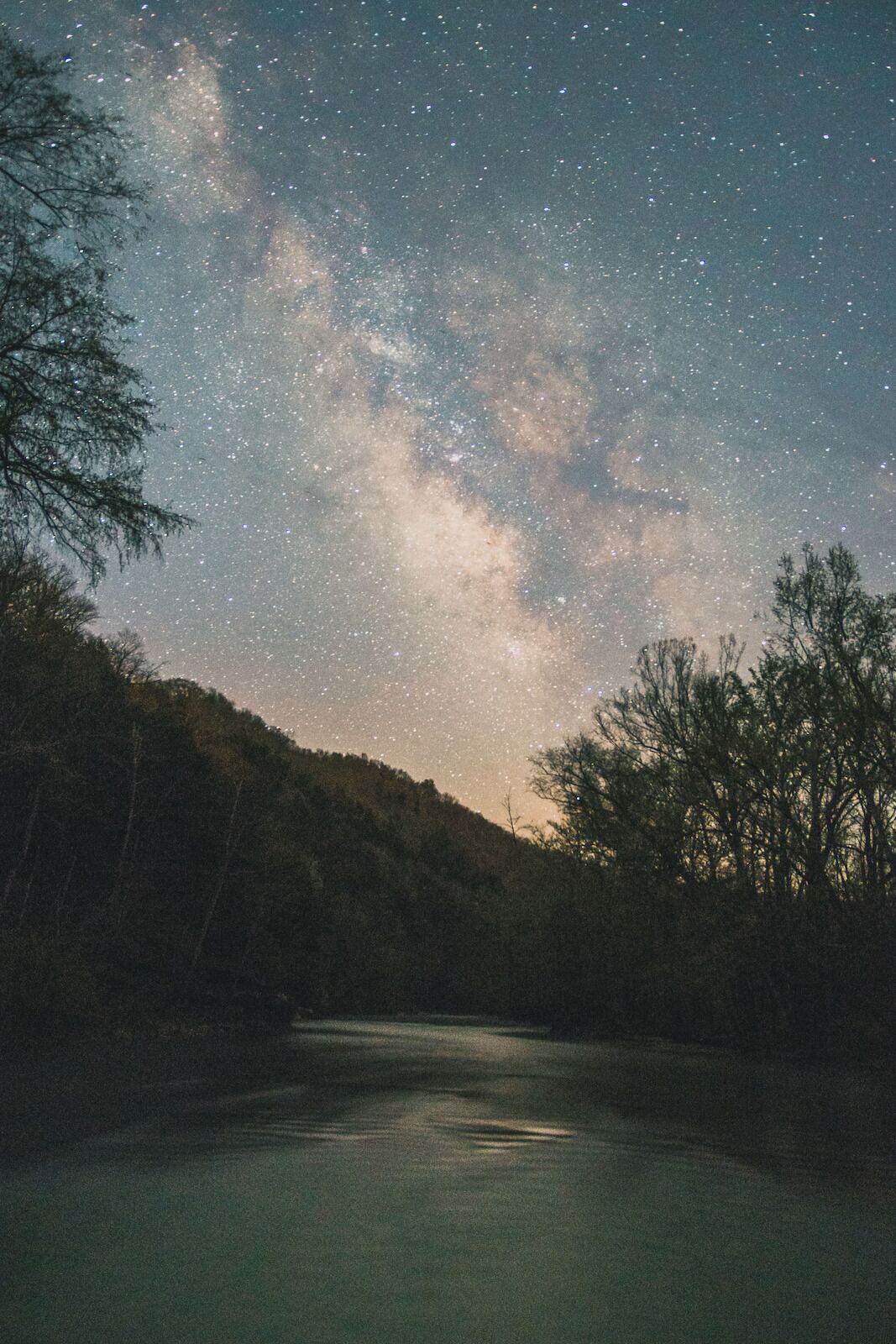
Photo: NPS/Tanner Burge
At Buffalo National River, the Ozark Mountains serve as an earthly frame for the stars. The area’s namesake river is actually America’s first designated national river, and it’s a point of pride in the state. There are plenty of places for all types of camping here, whether you’d rather be in the thick of the woods or closer to the main road. Hiking trails and sections of the river ideal for floating provide enough activities to fill the time between stargazing sessions in the 95,000-acre park. The park also hosts several ranger-led night sky programs during the summer.
Best seasons to visit: Spring and fall
Best type of camping: Tent or RV
Zion National Park — Utah
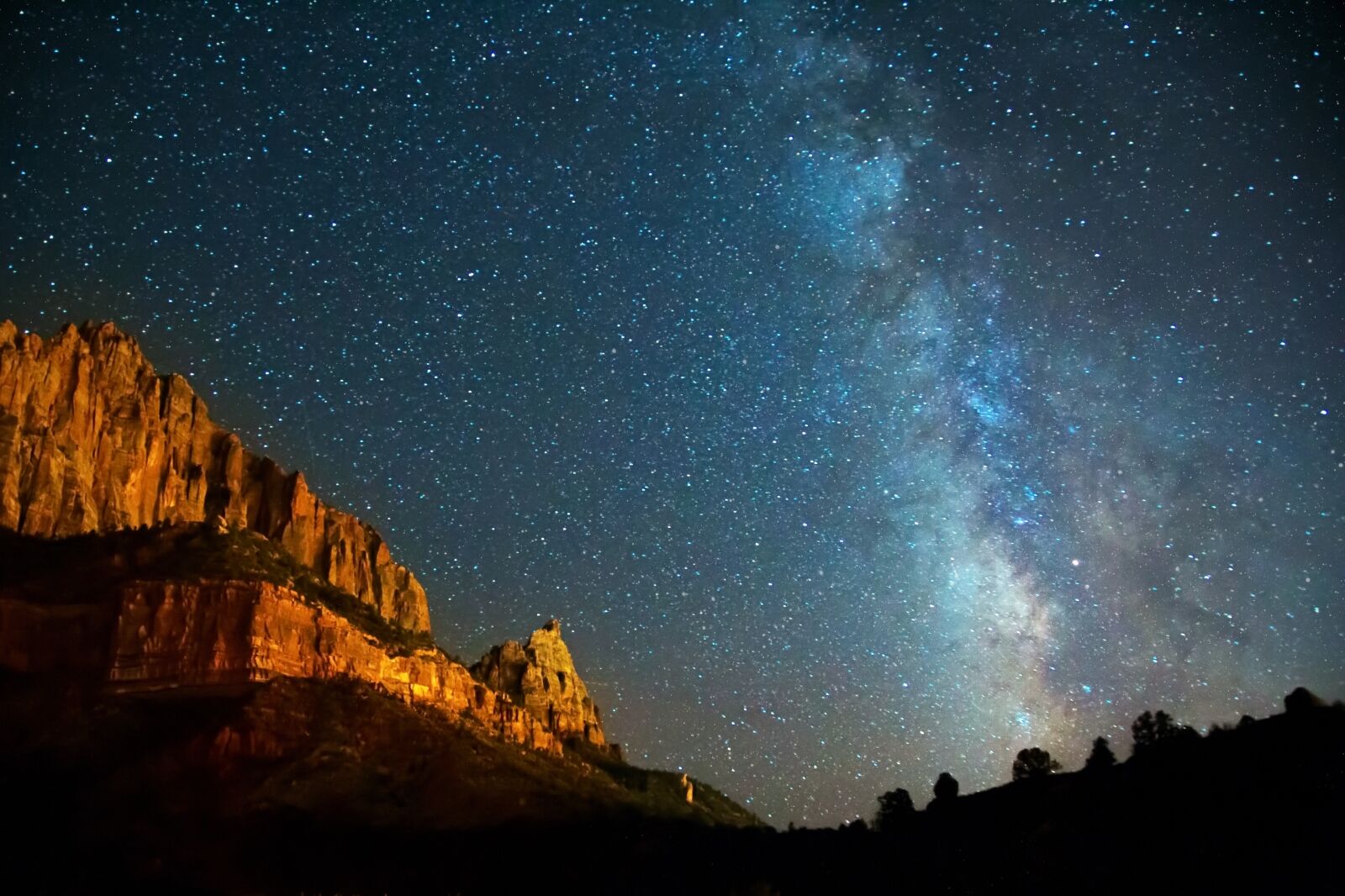
Photo: GoodFocused/Shutterstock
Zion National Park is a spectacular destination for stargazing. One of the best ways to enjoy the sunset and the onset of the night sky is to take a stroll along the Pa’rus Trail. It not only offers stunning views during the day, but also provides a great vantage point for stargazing at night.
For stargazing camping, you have a few options. But due to its positioning, the Watchman Campground is arguably the better of the bunch. It can be reserved up to six months in advance. If you’re planning to go during Zion’s busy season, book early to make sure you get your spot. The campsites in the park have little to no tree cover, so visiting in cooler times of year is advised.
Best seasons to visit: Spring and fall
Best type of camping: Tent or RV
James River State Park — Virginia

Photo: Virginia State Parks/JR Night Sky
The Eastern Seaboard is not known for its night skies. It’s home to nearly 40 percent of the country’s population, despite being around just 10 percent of the country’s land. These are not optimal night sky viewing conditions, to say the least. Yet a small park in the geographic center of Virginia pulls through for stargazers.
Located around 39 miles from Charlottesville, James River State Park has two miles of river with primitive camp spots and cabins to enjoy the forests and hills. Despite being relatively close to population centers, the sky is remarkably dark, and local astronomy groups hold events with telescopes throughout the year.
Best seasons to visit: Spring and fall
Best type of camping: Tent
Joshua Tree National Park — California
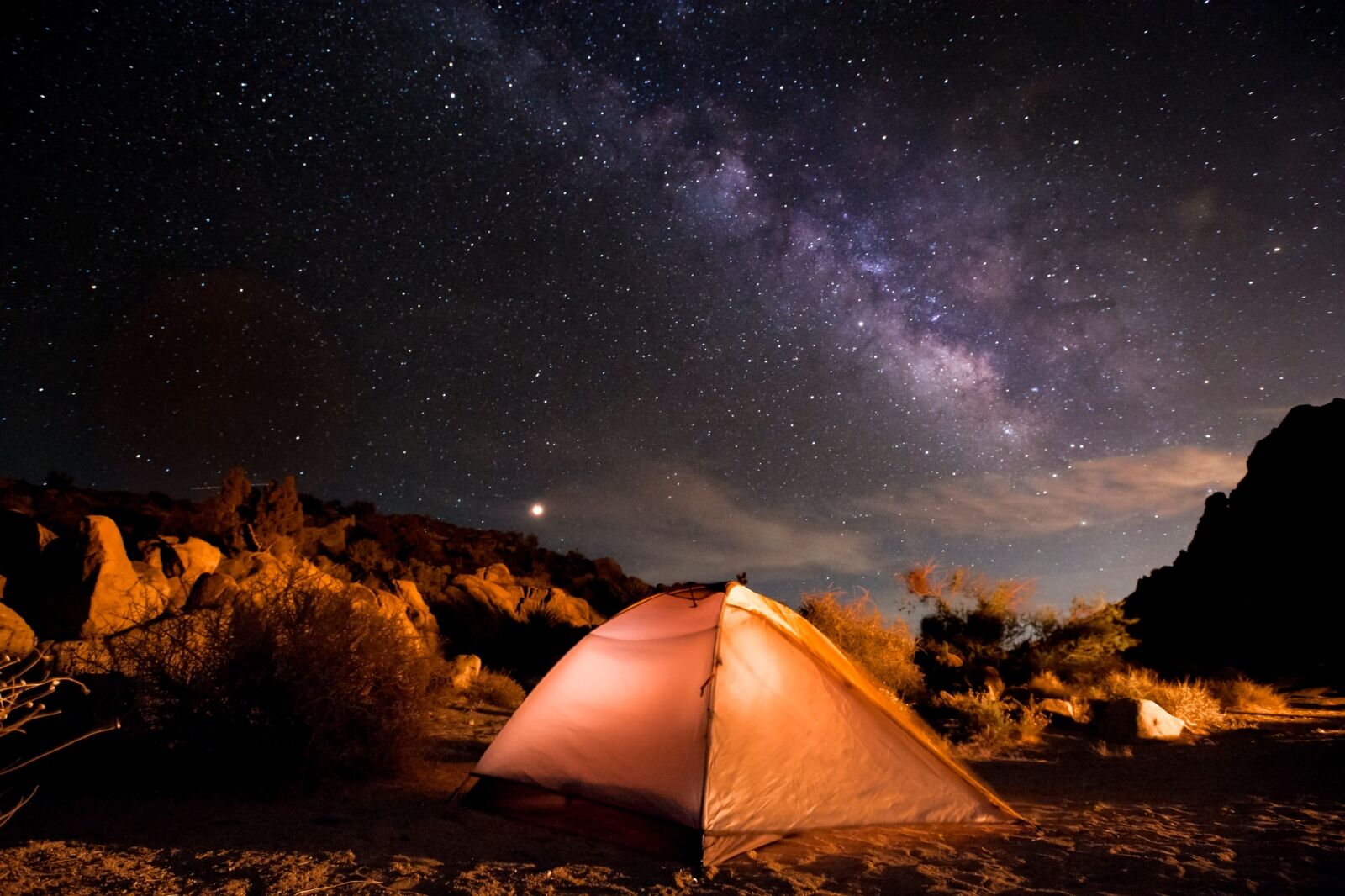
Photo: Jimmy W/Shutterstock
Joshua Tree National Park located in Southern California, is a haven for stargazers. Its remote location, minimal light pollution, and status as an International Dark Sky Park make it an ideal spot to enjoy the night sky. There are several popular stargazing sites especially in the eastern side of the park. Cap Rock, with its ample parking and short trail to the rock formation, is one of the best places in Joshua Tree for astronomical observation. Other favored locations include Quail Springs, Skull Rock, Twin Tanks Trailhead, and Hidden Valley.
Cottonwood Campground is often touted as the best spot to stay over night due to its darker skies. However, if Cottonwood is fully booked, Jumbo Rocks Campground is another excellent choice. Reservations for sites can be made on the day (or six months in advanced if you are organized.) All reservation campgrounds are open year-round, however sections of Indian Cove Campground, Black Rock Campground, and Cottonwood Campground are restricted in summer months.
Best seasons to visit: Spring, summer, and fall
Best type of camping: Tent
Big Cypress National Preserve — Florida
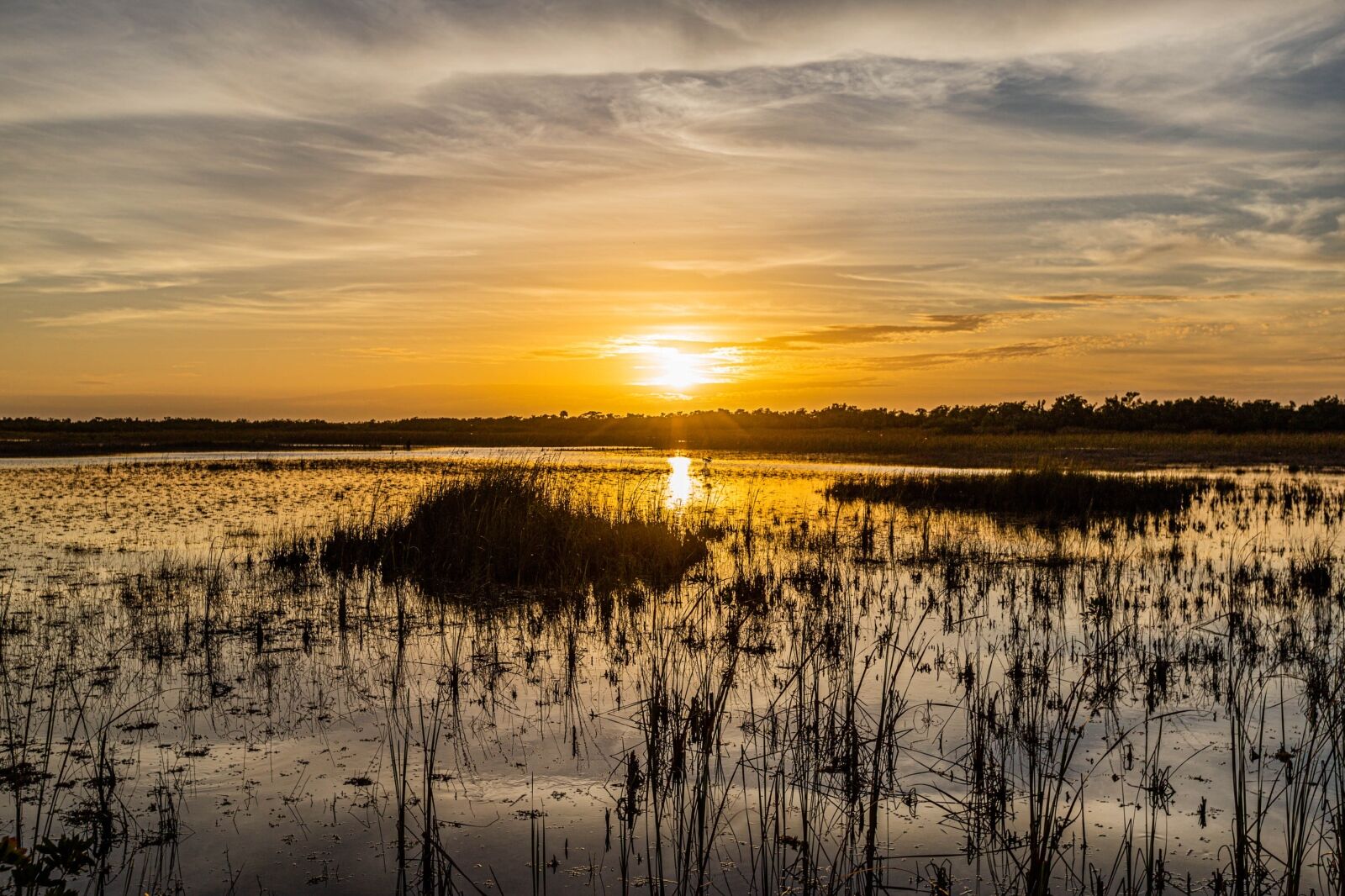
Photo: Paul Harrison/Shutterstock
At around 45 miles from Miami, Big Cypress National Preserve is one of the rare dark sky locations that’s not too far from city lights. It’s a perfect day trip — or, for stargazing purposes, night trip — for anyone in the vicinity of the southern tip of Florida. The sheer number of bright plants and wildlife makes for an eye-catching experience throughout the park. Here, right next to the Everglades, a sudden lack of people both grounds you and encourages you to look up at a sky without light pollution from neon signs and massive freeways. There are eight campsites in the area and backcountry camping is permitted.
Best seasons to visit: Spring and winter
Best type of camping: RV
Arches National Park — Utah
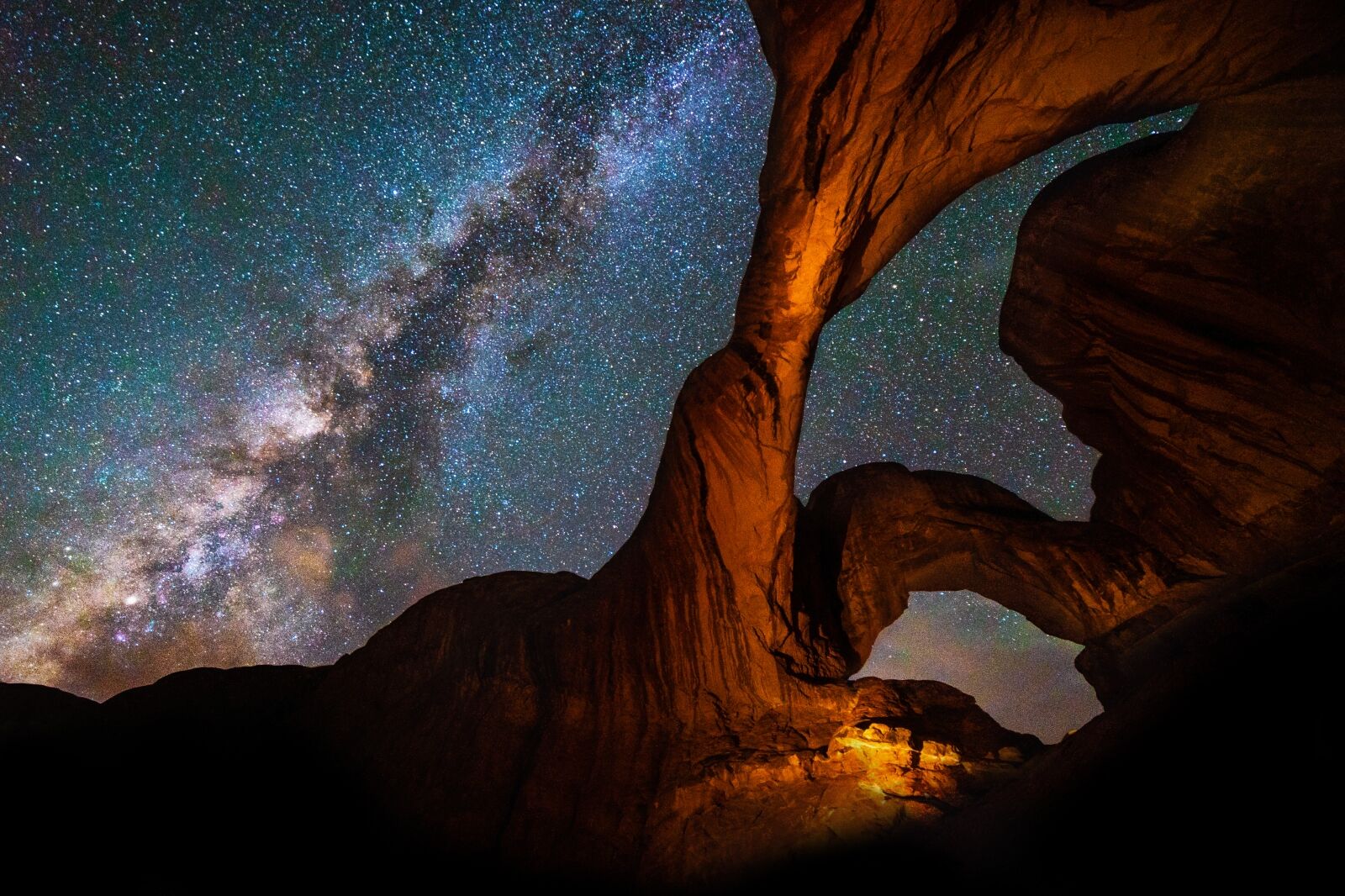
Photo: Arthur Cauty/Shutterstock
Another excellent spot for stargazing in Utah, Arches National Park, sits adjacent to the Colorado River and is home to the largest density of natural sandstone arches in the world. If weather permits, you can see stars from pretty much anywhere in the park, however the further north you are from Moab, the darker the sky will be.
There’s only one campground, Devils Garden, which is open from the beginning of May to the end of October. Booking in advance is imperative. Expect all sites to be full, especially during the busy season. There are other options around Moab, but as stated, to get the best stargazing experience, it’s worth staying outside of town.
Best seasons to visit: Spring and winter
Best type of camping: Tent or RV